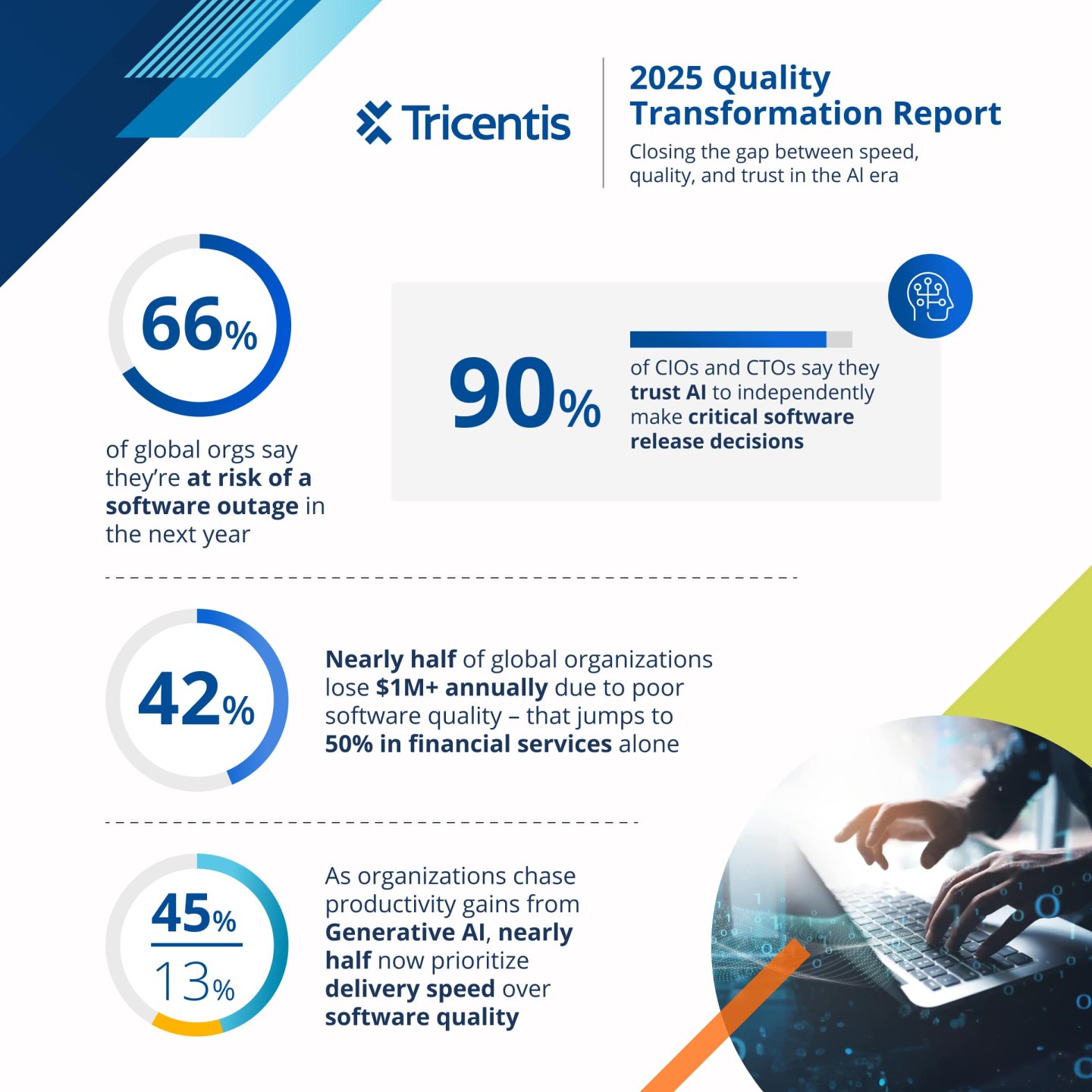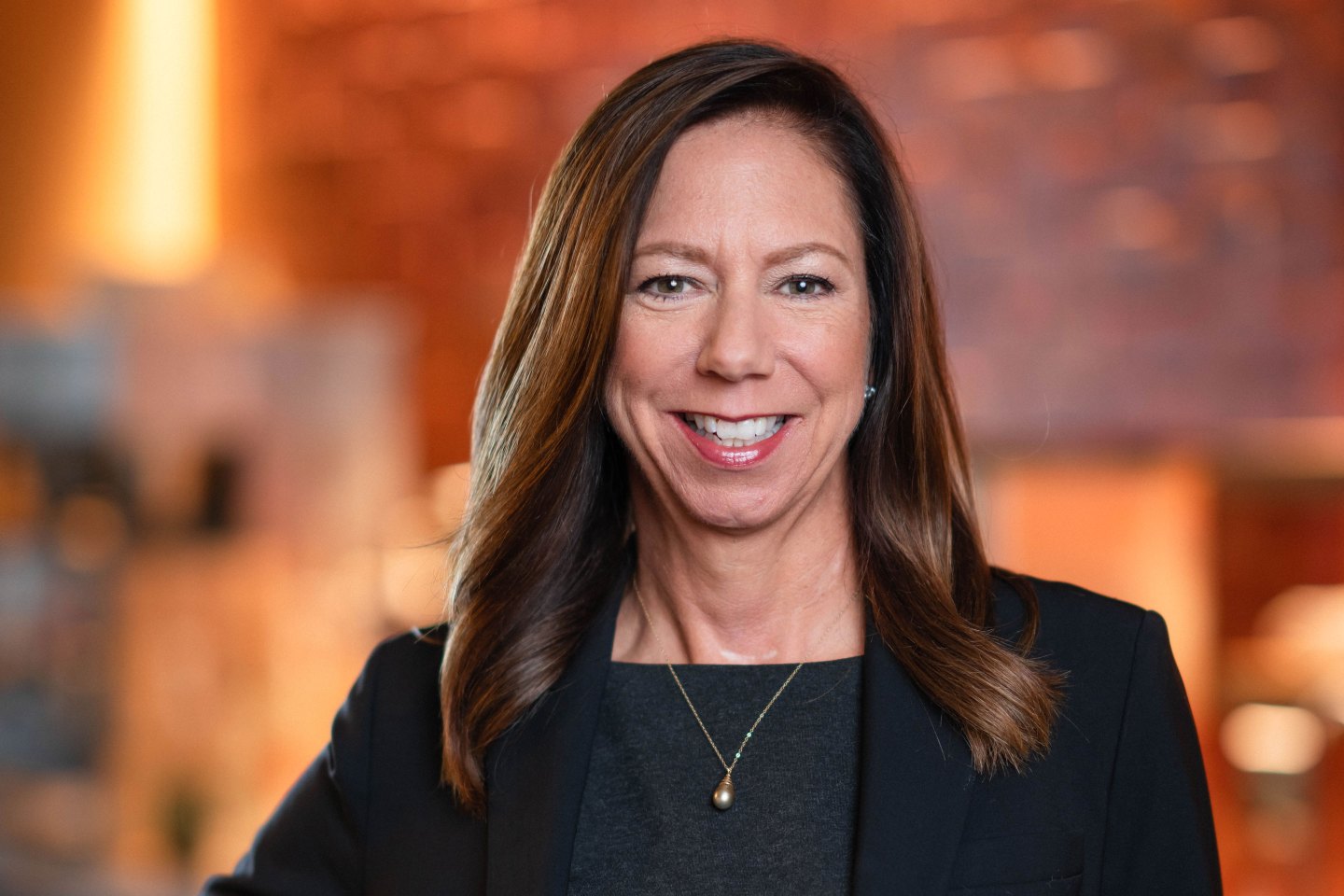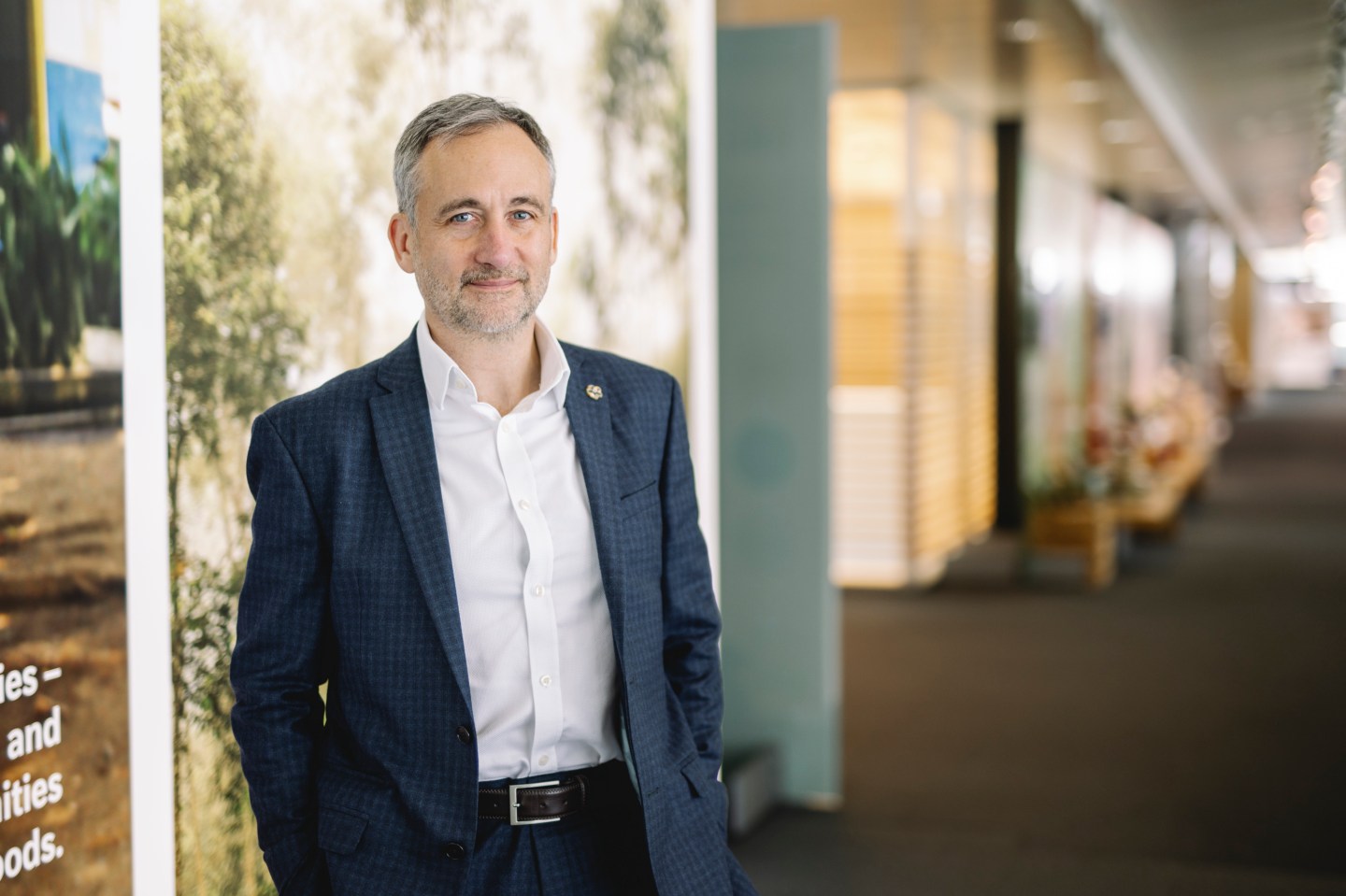A key pillar of the turnaround plan at Starbucks that’s being spearheaded by CEO Brian Niccol is to focus more on human connection between employees and customers and put less emphasis on technology. So what does that mean for Chief Technology Officer Deb Hall Lefevre?
“The technology story here at Starbucks—guess what?—the star of the story is not technology,” says Lefevre. “It’s human connection in our coffee houses.”
Technology, she says, will continue to be weaved throughout Starbucks’ strategy, ranging from in-store automation investments to newer technologies like generative artificial intelligence. But technology is now intended to work more quietly in the background. That’s a reframing of thinking at Starbucks, which was an early adopter and fast mover in mobile, a technological advancement that the restaurant chain mastered by courting 34 million active Starbucks Rewards loyalty members using its app in the U.S. alone.
During a 16-year career at rival McDonald’s, where Lefevre held various leadership roles including serving as chief information officer of the U.S. business, she kept a close eye on her rival’s technological prowess. “I often envied the tech that I was seeing, from a consumer perspective, at Starbucks,” says Lefevre. “They were the benchmark for all of us in the industry.”
Starbucks had perhaps too much success on mobile and lost its way a bit with how the physical stores were being managed. Frequently heralded as a much-desired “third place,” a space to convene between work and home, some critics lamented the stores had become too impersonal. Investments tilted toward the mobile experience, even leading Starbucks to open minimalist stores that were pick-up only locations for takeout orders. This led to some dissatisfaction as the guest experience felt more impersonal. Mobile orders were so popular they would pile up and result in long wait times, discouraging both in-person and even online shoppers.
Niccol was recruited last year from Chipotle Mexican Grill to get the coffee giant back on track, a turnaround that’s still a work in progress—Starbucks recently reported a fifth consecutive quarterly decline in U.S. comparable store sales.
Some early changes are operational, including simplifying the menu and launching fewer limited edition items. Others are intended to make the chain’s coffee shops feel more personal, like bringing back handwritten names and notes after using printed stickers for a time. That’s one example of Starbucks ceding efficiency gains from technology in favor of warmer hospitality.
Niccol and Lefevre are encouraged by a recent pilot last quarter in 700 locations where Starbucks increased its investment in staffing and adjusted the sequencing algorithm for orders, which helped reduce wait times for in-cafe and drive-thru customers without hurting those buying via mobile. Starbucks says that on average, wait times dropped by two minutes, bringing 75% of cafe order wait times to under four minutes at peak demand.
Lefevre, who joined Starbucks in 2022, says these adjustments can give Starbucks’ baristas more time to create a “moment of connection” with customers.
Other more subtle technology investments include the 200,000 connected devices Starbucks has deployed to 10,000 company-operated stores, one of the largest Internet of Things (IoT) rollouts in the quick-service restaurant sector, according to Lefevre. Digital menu boards will be rolled out across U.S.-company owned and operated stores over the next 18 months, which can be updated and monitored remotely, saving time for staff in the stores. Sensors are able to measure and monitor the thickness of coffee that’s being ground on site and improve the operational efficiency of refrigerators and freezers.
Starbucks has also made tweaks to improve the mobile experience, including sharing even more precise estimates for wait times for when an order is ready. Another update that will roll out this summer is around price transparency, more clearly explaining how each modification that a customer makes to customize a drink will affect the final price.
Lefevre’s AI investments include some of the basics, like offering Microsoft Copilot to assist customer support employees and corporate employees. Starbucks has also unveiled a digital tool to improve scheduling for baristas. The new feature gives employees a wider pool of stores across a district to swap shifts, resulting in half a million more shifts filled in the most recent fiscal second quarter ending March 30 from the prior-year period.
“It’s a win for our customers because they’re walking into fully staffed stores,” says Lefevre.
Lefevre imagines that future use cases for AI and other emerging technologies could range from generative AI being used to speed up the in-store training experience, to using augmented reality to help baristas track inventory, and even a customer-facing virtual “AI barista” that could help customers select their order.
“It’s a world of possibilities across the board, from store design to supply chain,” says Lefevre. “There’s just so many things that we’re thinking about, day in and day out.”
John Kell
Send thoughts or suggestions to CIO Intelligence here.
NEWS PACKETS
Economic uncertainty leading CIOs to defer projects. Nearly two-thirds of senior IT leaders surveyed by Boston Consulting Group have ranked cost management as their top priority with more than two in five saying they had deferred discretionary IT projects, CIO Dive reports. The spending strategies are shifting in response to President Donald Trump’s ongoing trade war, with tariffs wildly fluctuating, making it hard for businesses to plan for the future. Prior to the tariffs announcements, more than three-quarters of IT leaders expected to increase their budgets by an average of 4% in 2025. Now, 56% intend to do so, at a more modest average increase of 2.4%. “Everyone went into January expecting this to be a year of heavy investment in AI, cloud and security,” says Clark O’Niell, BCG managing director and partner. “We’ve now seen the uncertainty around tariffs in the macro cycle force people to rethink their priorities.”
Microsoft to cut 6,000 employees. Microsoft confirmed plans to lay off 3% of the tech giant’s workforce across all levels, teams, and geographies, with a particular focus on reducing layers of management, an organizational restructuring trend that’s also been lauded by Amazon’s Andy Jassy and Meta’s Mark Zuckerberg. Bloomberg reports that Microsoft has to keep a lid on spending given the tens of billions of dollars the company is investing annually in data centers to power AI services and the company’s Azure cloud-computing division.
AI funding news heats up. Even amid greater uncertainty about the world’s macroeconomic trends, public companies, venture-capital firms, and nation states continue to pour billions into their AI investments. The latest big figure is a reported new funding round for Perplexity that would value the San Francisco-based company at $14 billion, a more than 50% hike from late in 2024, the Wall Street Journal reports. Google, which has already invested more than $1 billion in Anthropic, on Monday unveiled a new fund to invest in other AI startups and give them early access to AI models like Gemini and support from the company’s researchers and engineers. Saudi Arabia, meanwhile, announced a new company to develop and oversee AI technologies, including AI infrastructure, cloud, and Arabic large language models.
But SoftBank pumps the brakes on AI infrastructure spending plans. Bloomberg reports that a commitment from SoftBank founder Masayoshi Son and OpenAI cofounder Sam Altman to quickly pump $100 billion into the U.S. AI infrastructure has sputtered more than three months after the project, known as Stargate, was unveiled. No deals have moved forward and the news outlet says that SoftBank hasn’t yet begun detailed discussions with banks, private equity investors, and asset managers. Financiers are reportedly reassessing data centers in the wake of growing economic volatility, which could reduce demand for data centers. Cheaper AI services, including from China’s startup DeepSeek, also calls into question the purported profitability of AI infrastructure projects.
ADOPTION CURVE
Speeding up software development could come at a cost. CIOs frequently laud increased productivity gains from AI coding tools, with many saying the range of improvement is between 20% to 30% for their developers and software engineers. But the halo effect from such tools may also be putting additional pressure to deploy code at a faster pace without proper testing rigor. A survey of over 2,700 global CIOs, CTOs and other technology leaders, backed by software testing company Tricentis, says this approach is costing organizations millions, with 81% putting the price tag for their firms between $500,000 to $5 million each year.
The losses were even more dire in the U.S. Nearly half (45%) of organizations in that region reported software quality failure costs above $5 million annually. Organizations that are investing in generative AI reported that they are more focused on improving delivery speeds (45%) over enhancing software quality (13%).

JOBS RADAR
Hiring:
- The Bolton Group is seeking an IT director, based in New York City. Posted salary range: $200K-$250K/year.
- LaGuardia Community College is seeking a CIO, based in New York City. Posted salary range: $150K-$170K/year.
- BGB Group is seeking a senior director of IT, based in the New York City metropolitan area. Posted Salary range: $165K-$185K/year.
- Mitchell Hamline School of Law is seeking a CIO, based in St. Paul, Minnesota. Posted salary range: $131K-$160K/year.
Hired:
- Unum Group (No. 332 on the Fortune 500) announced the appointment of Shelia Anderson to the role of EVP and chief information and digital officer, where she will report to President and CEO Rick McKenney. Anderson joins the insurer from peer Aflac, where she served as CIO. She has also held technology leadership roles at Liberty Mutual, USAA, Hewlett-Packard, and Electronic Data Systems.
Every Friday morning, the weekly Fortune 500 Power Moves column tracks Fortune 500 company C-suite shifts—see the most recent edition.
- Lamb Weston appointed Benjamin Heselton as CIO, joining the food processing company after most recently serving as CTO at auto parts supplier Wurth IT. For 18 years, Heselton held various leadership roles at Wurth, including previously serving as CIO and VP of IT.
- Ralph Lauren promoted Naveen Seshadri to the role of global chief digital officer, after he initially joined the luxury apparel brand as global head of consumer technology and digital commerce in 2024. Seshadri previously served as an EVP for The Walt Disney Company, as CDO at Foot Locker, and held technology leadership roles at BJ’s Wholesale Club, Lonely Planet, and Sears.
- Hims & Hers Health appointed Mo Elshenawy to the role of CTO, joining the online pharmacy company after most recently serving as president and CTO at General Motors’ autonomous car unit Cruise. Elshenawy also held leadership roles at Amazon.
- RWS named Christina Scott as chief product and technology officer, a newly created role that also appoints Scott to the translation company’s executive team. Before joining RWS, Scott served as chief operating officer at a fertility startup and as CPTO at energy supplier OVO Energy. She also served as chief product and information officer for the Financial Times and deputy CTO at News Corp.
- Backbase announced the appointment of Adrian McPhee as CTO, joining the Dutch-based financial software company to accelerate the advancement of its new AI-powered banking platform. McPhee previously served as global CTO for auto leasing and fleet management company LeasePlan and served as CIO of Endeavour College of Natural Health in Australia.
- Bridger Photonics, which sells methane emissions detection equipment to oil and gas operators, appointed Ryan Sullivan as CTO to oversee the company’s software team and propel investments in AI, data science, and cloud-first platforms. Bridger’s founding CTO, Mike Thorpe will transition into the newly created role of chief scientist.
- G&A Partners named Pascal Gibert as CTO, succeeding Lloyd Closson, who will now serve as the VP of software engineering at the human resource outsourcing services provider. Gibert previously served as VP of engineering product development at HR services provider TriNet and held technology leadership roles at software companies ServiceNow and SAP.












